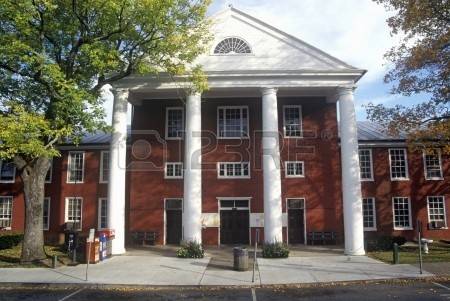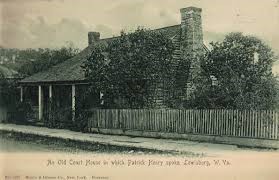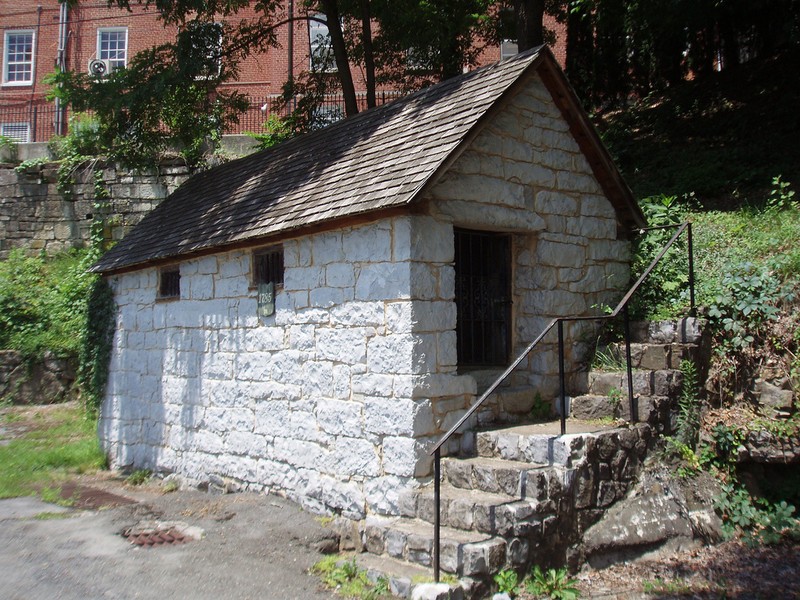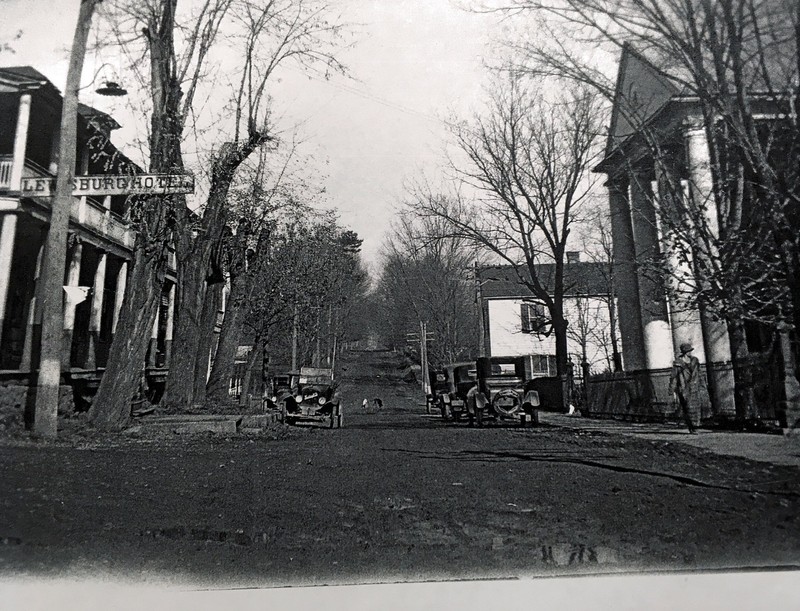Greenbrier County Courthouse
Introduction
Text-to-speech Audio
The Greenbrier County Courthouse was built in 1837 by a local brick mason named John. W Dunn. and has been improved throughout the years. The original courthouse stands at the center of two new wings, which were built in 1937 and 1963. The Greenbrier County Courthouse was one of the first courthouses built west of the Appalachian mountains, and was listed on the National Register of Historic Places in 1973.
Images
A modern day picture of the courthouse.


The Lewis Spring

Photo of Court Street with the Courthouse on the right and Lewisburg Hotel on the left. Courtesy of Greenbrier Historical Society.

Backstory and Context
Text-to-speech Audio
Greenbrier County was created by the Virginia General Assembly in October of 1777, along with Rockbridge and Rockingham Counties, but the law was not ratified until March 1st, 1778. Greenbrier was split off from Botetourt County. The first court held in Greenbrier County is unknown, however the earliest county clerk record dates back to November of 1780. The first county clerk’s office was built on the property that is now known as the Stuart Manor, because Col. John Stuart was the county clerk at the time. John Stuart was a leader in the movement to create Greenbrier County and is often referred to as the “Father of Greenbrier County.” In 1782, a one-story log structure was deemed the first official courthouse and was facing Washington Street, at the corner leading to the Old Stone Church. It is unknown whether the log structure was already present, or whether the county built or rented the structure. Patrick Henry defended a man acquitted of manslaughter in the first courthouse of Greenbrier County. The log structure was utilized as a courthouse for only a short period of time, and was turned into a private residence by William Smithee. After 70 years of being a private residence, the structure was razed in the 1920’s.
Lewisburg is the third oldest town in the state of West Virginia, and was created by the Virginia Assembly in October of 1782. The area that is now known as Lewisburg was named for the person Andrew Lewis who surveyed it. The town was originally known as Savannah. Captain Thomas Edgar was the county surveyor, and laid out the town of Lewisburg in a square form with four half-acre lots in each block. The county set aside lots 7 and 8 for public buildings, such as the courthouse, prison, and a market house for cattle. The Lewis Spring inhabited lot 8, which is why this area was deemed for public structures.
Scholars debate the number of and location of courthouses prior to the current Greenbrier County courthouse, but it seems all of the structures prior to 1800 were small log cabins. In 1800, Colonel John Stuart gifted Greenbrier County with a three-story brick courthouse. Lewisburg prospered and grew in the early 1800’s, and the Supreme Court of Virginia began holding sessions in the Greenbrier County courthouse. In 1837, a ten-thousand-dollar levy was passed, and the process to build a county courthouse on lots 7 and 8 began. The last and current Greenbrier County Courthouse was constructed of local materials by John Dunn in the same year. The reason the structure was built so close to the road, and doesn’t have lawn space, is because of its location near the Lewis Spring. The WPA constructed new wings on either side of this existing courthouse in 1939.
Sources
Rice, Otis K.. A History of Greenbrier County. Lewisburg, WV: Greenbrier Historical Society, 1986.
Woods Dayton, Ruth. Lewisburg Landmarks. Charleston, WV: Education Foundation, Inc., 1957.
Greenbrier County Bicentennial 1778-1978. Lewisburg, WV: Greenbrier County Bicentennial Committee, 1978.
Historical Booklet Greenbrier County 160th Anniversary 1778-1938.
Anderson, Belinda "Lewisburg." e-WV: The West Virginia Encyclopedia. 06 December 2012. Web. 06 July 2017.
Woods Dayton, Ruth. Greenbrier Pioneers and Their Homes. Charleston, WV: WV Publishing Company, 1942.
